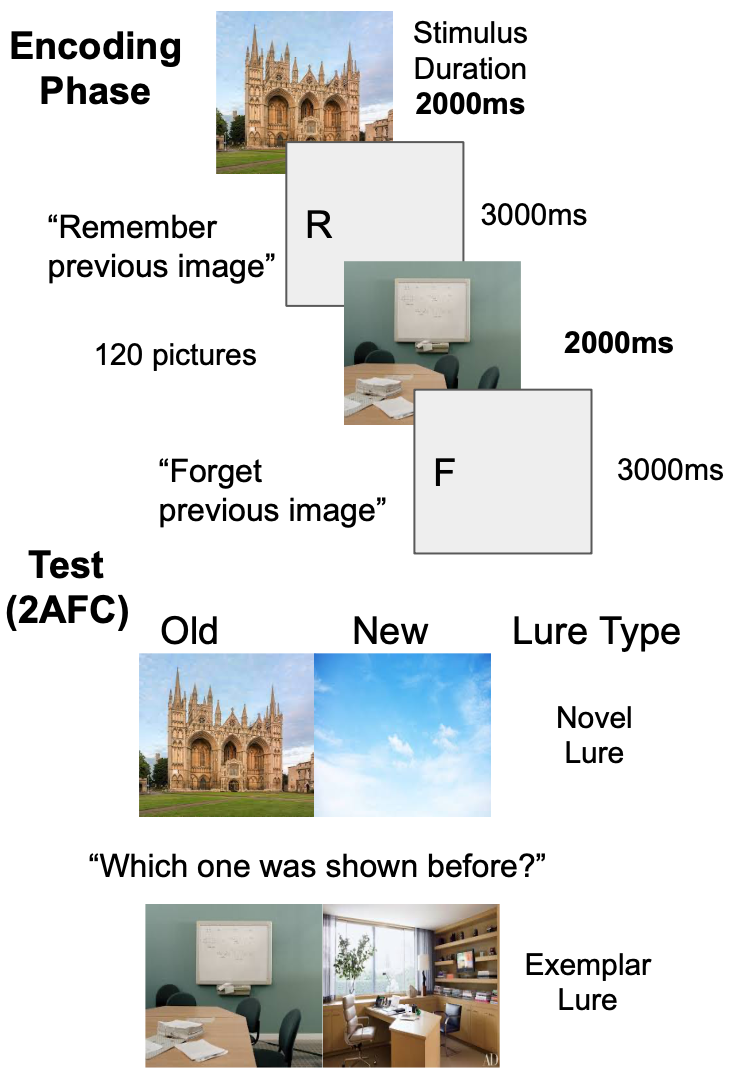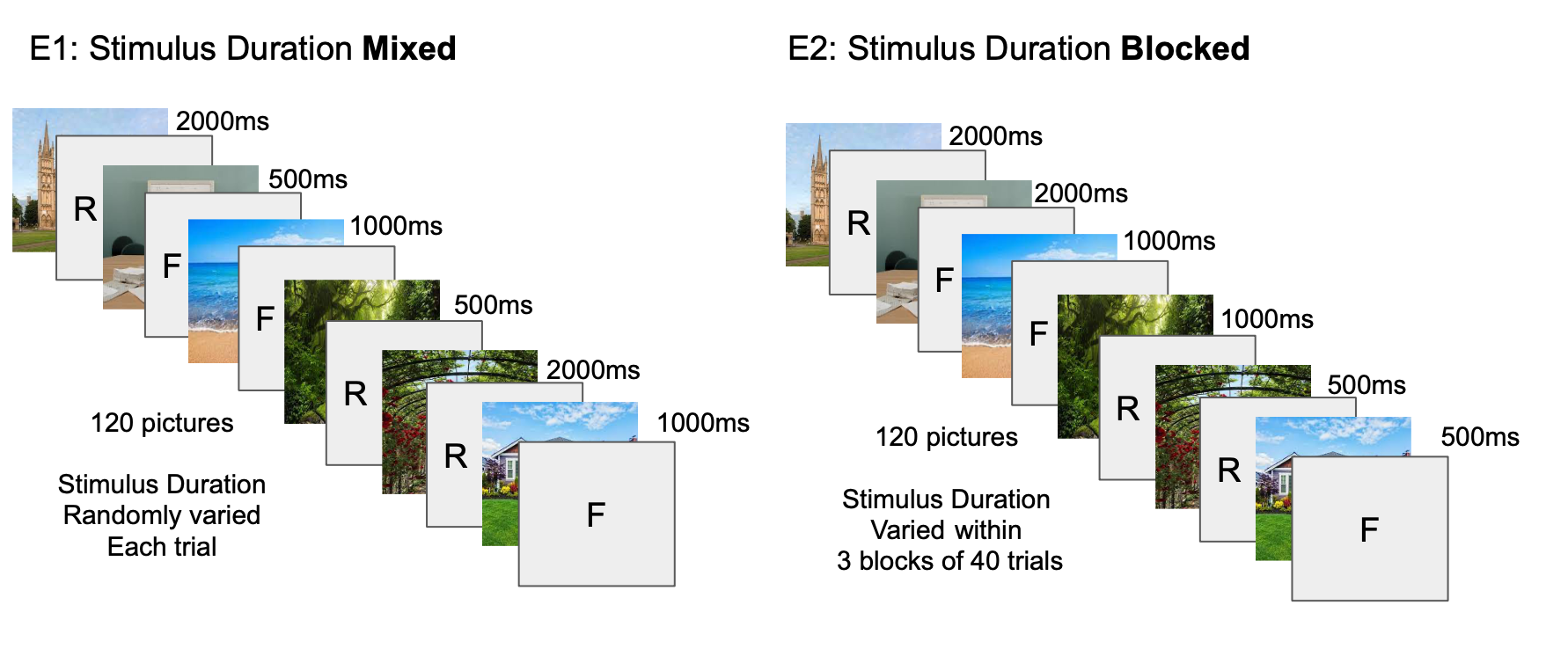
Stimulus duration and directed forgetting for pictures of natural scenes
Patrick Ihejirika1, Matthew J. C. Crump1, 
1 Department of Psychology, Brooklyn College of CUNY

What is Directed Forgetting?
Directed forgetting research investigates people’s ability to intentionally forget information (MacLeod, 1998). For example, in a memory task for words participants are instructed to remember some words and forget others for a later memory test. A directed forgetting effect is observed when people show worse memory for the words they attempted to forget. Directed forgetting tasks often use word stimuli, and the limitations of intentional forgetting for other kinds of information remain unclear.
Can people intentionally forget memorable picture information?
We are investigating directed forgetting for pictures. The picture-superiority effect suggests that pictures are inherently more memorable than words (Gehring et al., 1976). Standing (1973) showed that people had little difficulty in memorizing over 10,000 pictures.
Prior work: Limited Directed Forgetting for Pictures
Ahmad et al. (2019) found limited directed forgetting for pictures of natural scenes and everyday objects.

Prior Results
Reproduction of the results from Ahmad et al. (2019).

- They found a small directed forgetting effect.
- The effect was only observed for items given a more difficult recognition test, involving a similar (exemplar) lure.
What factors determine intentional forgetting of pictures?
Are pictures easier to forget if they are made less memorable?
Hypothesis
- We assume that the magnitude of directed forgetting is influenced by stimulus encoding strength:
- Strongly encoded stimuli are harder to forget
- Wakly encoded stimuli are easier to forget
We propose that decreasing stimulus duration during encoding will make pictures less well encoded, and easier to forget
We predict the directed forgetting effect will increase as stimulus duration decreases.
Predicted effect of stimulus duration manipulation

Methods: Replication with stimulus duration manipulation
- 2 close replications of Ahmad et al. (2019).
- used the same set of natural scenes
- 47 and 45 participants recruited from Amazon’s Mechanical Turk
- Programmed the experiment using JsPsych (De Leeuw, 2015)
- Participants completed the experiment in their web-browser

Results: Inconsistent directed forgetting effects
E1 Mixed

E2 Blocked

Conclusions and Next Steps
- We did not replicate Ahmad et al. (2019)
- We did find a main effect of stimulus duration
- We did not find that reducing stimulus duration systematically increased the directed forgetting effect.
- Our power analysis suggests we need over 200 subjects to reliably detect the higher-order interaction
- Directed forgetting may be limited by the cognitive demands associated with processing the instruction to forget
Poster information
This poster was prepared as a computationally reproducible project using vertical (Vuorre & Crump, 2021), and several libraries from the open-source community.
References
Ahmad, F. N., Tan, P., & Hockley, W. E. (2019). Directed forgetting for categorised pictures: Recognition memory for perceptual details versus gist. Memory, 27(7), 894–903. https://doi.org/10/gmgg3g
De Leeuw, J. R. (2015). JsPsych: A javascript library for creating behavioral experiments in a web browser. Behavior Research Methods, 47(1), 1–12.
Gehring, R. E., Toglia, M. P., & Kimble, G. A. (1976). Recognition memory for words and pictures at short and long retention intervals. Memory & Cognition, 4(3), 256–260.
MacLeod, C. M. (1998). Directed forgetting. In J. M. Golding & C. M. MacLeod (Eds.), Intentional forgetting: Interdisciplinary approaches (pp. 1–57). Lawrence Erlbaum Associates.
Standing, L. (1973). Learning 10000 pictures. The Quarterly Journal of Experimental Psychology, 25(2), 207–222. https://doi.org/10/fnjhs5
Vuorre, M., & Crump, M. J. (2021). Sharing and organizing research products as r packages. Behavior Research Methods, 53(2), 792–802.